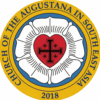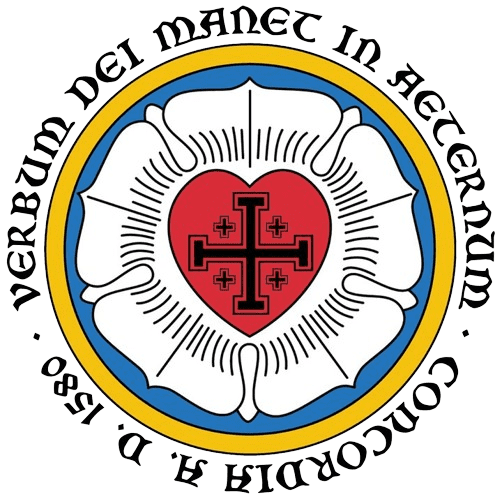1. What are the Holy Scriptures?
The Word of God, treating of his being and will, committed to writing by prophets and apostles, who were moved thereto by the Holy Ghost. Generically speaking, all the books of the Bible are denoted by the name Holy Scriptures; but specifically, this title belongs only to such books as are canonical; and hence the term canonical has been applied to Scripture itself. (Chemnitz Exam. Concil. Trid.)
2. But do not all the books of the Bible possess one and the same authority?
No. For some are canonical, and others apocryphal. The authority of the former is fixed and acknowledged: but the latter, although read by the church for the edification of the people, should not be used to establish the authority of any doctrine. (Jerome, quoted by Chemnitz.)
3. Why are they called canonical?
They derive their name from kanon (i.e., rule or level), since as a perfect rule or most exact balance we are to use them to ascertain the correctness and true value of all other writings, whether of believers or unbelievers; but the Scriptures themselves we dare not judge by any other standard. (Chrysostom, Homily xiii, on 2d Corinthians.)
The term canonical is derived from Scripture itself.
Ps. 19:4. Their line is gone out through all the earth.
Rom. 10:18. Their sound went into all the earth.
Gal. 6:16. And as many as walk according to this rule, peace be on them and mercy.
Phil. 3:16. Whereunto we have already attained, let us walk by the same rule, let us mind the same thing. (Chemnitz.)
4. But whence have the canonical Scriptures this authority?
That the canonical Scriptures are what they are, i.e., heavenly truth, arises from no other source than from God their author.
2 Tim. 3:16. All Scripture is given by inspiration of God, and is profitable for doctrine, for reproof, for correction, for instruction in righteousness.
2 Pet. 1:21. For the prophecy came not in old time by the will of man; but holy men of God spake as they were moved by the Holy Ghost.
But God himself likewise wished that the canonical authority of the Scriptures should be declared by the church, not indeed by every portion of it, but that only which existed at the time in which the canonical writers lived; so that the church sustains to Scripture the place not of a judge, but only of a witness. (Chemnitz.)
5. What are the apocryphal books?
Those whose origin is obscure, and concerning whose authority we have no testimony from those persons by whom we have been led to receive the canonical Scriptures. (Augustine.)
6. Are the Holy Scriptures susceptible of any other divisions?
They are. For in respect to different times, and the different states of the church, they are divided into the Old and New Testament; and in respect to their subject-matter, into the law, the prophets, and the gospel.
7. Are the Holy Scriptures clear and plain?
Exceedingly so, especially in all those passages which treat of faith, our justification before God, and eternal salvation.
Ps. 119:105. Thy word is a lamp unto my feet, and a light unto my path.
2 Pet. 1:19. We have also a more sure word of prophecy; whereunto ye do well that ye take heed as unto a light that shineth in a dark place, until the day dawn, and the day star arise in your heart.
8. Are the Holy Scriptures full and sufficient to instruct us in faith and life?
Yes. 2 Tim. 3:16,17. All Scripture given by inspiration of God is profitable for doctrine, for reproof, for correction, for instruction in righteousness, that the man of God may be perfect, thoroughly furnished unto all good works.
The preceding verse also says: The Holy Scriptures are able to make thee wise unto salvation by faith which is in Christ Jesus.
9. Are the canonical Scriptures also a rule and judge of church controversies?
The only rule and standard according to which all doctrines and teachers alike must be valued and judged, are the prophetic and apostolic Scriptures of the Old and New Testaments, as it is written:
Ps. 119:105. Thy word is a lamp unto my feet, and a light unto my path.
Gal. 1:8. Though an angel from heaven preach any other gospel unto you than that which we have preached unto you, let him be accursed. (Form of Concord, Epitome, Intr. 1.)
“With our whole heart we receive and embrace the prophetic and apostolic writings of the Old and New Testaments, as the clear and pure fountains of Israel, and believe that these holy writings alone are the sole and infallible rule, by which all tenets must be tried, and according to which we should judge all doctrines and all teachers. (Form of Concord, Sol. Dec., Intr. 3.)
10. Is the authority of the fathers and of the later theologians equal to that of the Scriptures?
Other writings of ancient and modern teachers, whatever their reputation may be, are to be considered as in no manner of equal authority with the Holy Scriptures, but are to be subordinated to them, and should not be received otherwise than as witnesses respecting the manner in which, since their times, the pure doctrine of the prophets and apostles, has been preserved in certain parts of the world. (Form of Concord, Epitome, Intr. 2.)
11. What are the oecumenical or catholic symbols?
They are brief and most excellent confessions of the Christian faith, firmly established upon the word of God, opposing both such heresies as had arisen during the age of the Apostles, and others which arose after their times. (Form of Concord, Sol. Dec., Intr. 8.)
12. How many symbols are there which belong to this class?
Three. The Apostle’s, the Nicene, and the Athanasian.
13. Do our churches recognize any other symbolical books?
They do. But likewise only as testimonies concerning the doctrine of their times: yet in an inferior grade, because approved with less agreement.
14. What are the symbolical books of our churches?
I. The Unaltered Augsburg Confession which in the year 1530 was presented to the Emperor Charles V. at Augsburg. II. The Apology of the Augsburg Confession. III. The Smalcald Articles. IV. The two Catechisms of Luther. V. The Form of Concord.
15. Have all these symbols which you have mentioned equal authority?
No. For those which have been approved by the unanimous consent of the whole church (to which class belong the three oecumenical symbols) have far greater authority than those which have been received only by particular churches: although they all agree in this, that they are to be distinguished from the Holy Scriptures by a great degree of difference.
16. How does the authority of the symbolical books differ from that of the word of God?
The Holy Scriptures are recognized as the sole judge, rule, and standard, to which as to the only touchstone all doctrines must be brought, and according to which they must be judged whether they be good or evil, true or false. But the symbols, and other writings, have not the authority of a judge: this office belongs alone to the Holy Scriptures. (Form of Concord, Epitome, Intr. 7.)
17. What then is the design and use of symbolical books?
To serve only as a testimony and explanation of our faith, exhibiting the manner in which, at certain times, the Holy Scriptures were understood and explained, and setting forth the grounds upon which doctrines conflicting with the Holy Scriptures have been refuted. (Form of Concord, Epitome, Intr. 8.)

